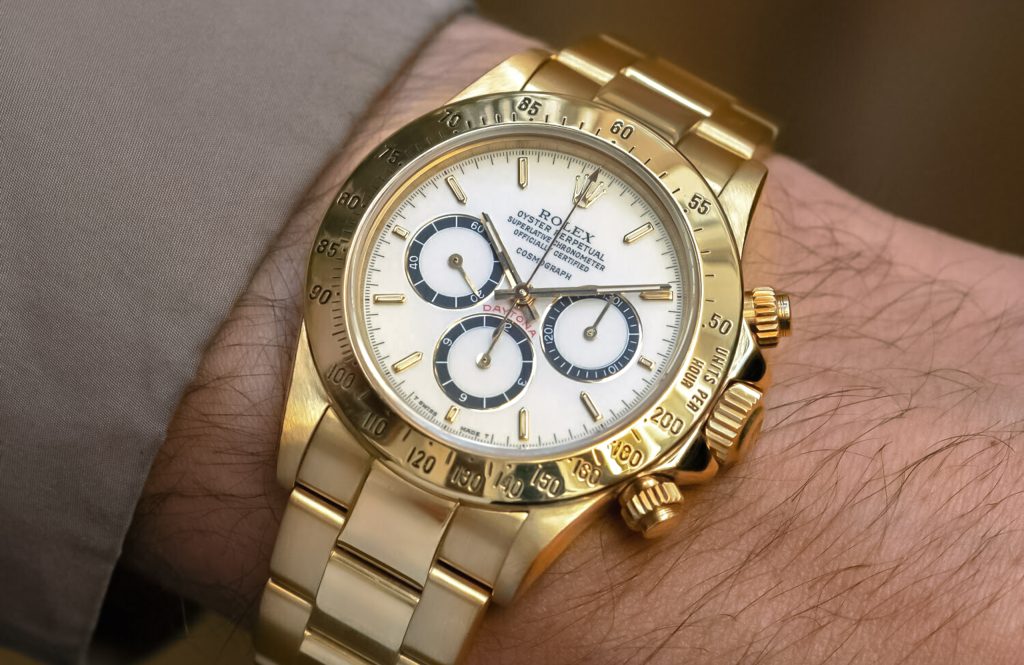
Porcelain ‘Floating Cosmograph’ 16528 Rolex Daytona
It is difficult to overstate the importance of the 16520 (or 16528 here in yellow gold). The Cosmograph had become undesirable and a stagnant seller by the year 1988. For context, there are stories from that era of customers asking to buy special production Day-Dates, but having to purchase Daytonas to sweeten the AD’s books. What the Daytona required was radical rethink, which is precisely what it received. What resulted is one of the most cemented pieces of modern watch design. While any 16520 is an object of beauty, the earliest production dials feature a ‘COSMOGRAPH’ line of text much lower down than latter iterations and a different dial construction known by collectors as the porcelain dial Daytonas.

The 16520 was Rolex’s first automatic chrono. This was well overdue, but characteristically Wilsdorf entered the party with grace. These are often referred to as Zenith Daytonas, which is true enough as the movements were purchased directly from Zenith surplus. But that somewhat does a disservice to the over-200 laborious modifications Rolex performed on each calibre before it was deemed worthy of a Rolex signature. The date was eliminated, the beat was dropped from 36000 to 28800 vph, a larger free-sprung balance was fitted, and many individual components received more careful finishing. This is all not even to mention the fact that this design has lasted and only improved over time. The 16520 is the foundation which all subsequent Cosmographs since have built upon, as desirable nearly four decades on as it was at release. This is the watch that began Rolex’s waiting list policy (actually), and that should be no surprise.

However, this precise watch is so much more. The space between the ‘OFFICIALLY CERTIFIED’ and ‘COSMOGRAPH’ lines mark this dial out as amongst the earliest ever automatic Daytonas. These dials go by Mk1, porcelain, or floating Cosmograph (for obvious reasons). That text irregularity isn’t the only distinction. The printed texts here have a 3D quality, where their shadow is visible under a layer of gloss sheen. The dial construction of these early watches differs from latter materials, leading to the moniker porcelain for its attractive depth. In addition, these watches used a slightly different bezel graduated from 50 to 200 units, with 200 just under 3. Later bezels graduated up to 400. This Daytona literally hails from the year of introduction, 1988, and in full 18k yellow gold: opulent, classic, and nuanced neo-vintage.


This example displays a relatively full case with sharp lines on its lugs, but has likely seen a polish. The bezel is the correct 200 unit. The dial is flawless with all its depth unmarred by time. It comes as a naked watch from a well-regarded Dutch retailer.
Find this 16528 here from Amsterdam Vintage Watches for 118000 EUR.








